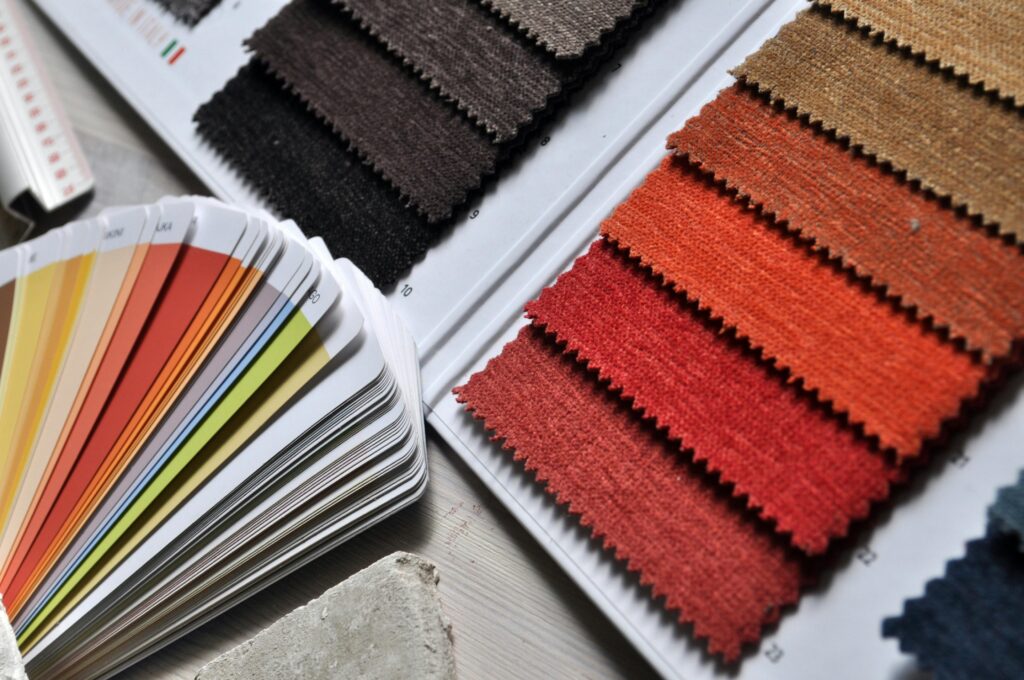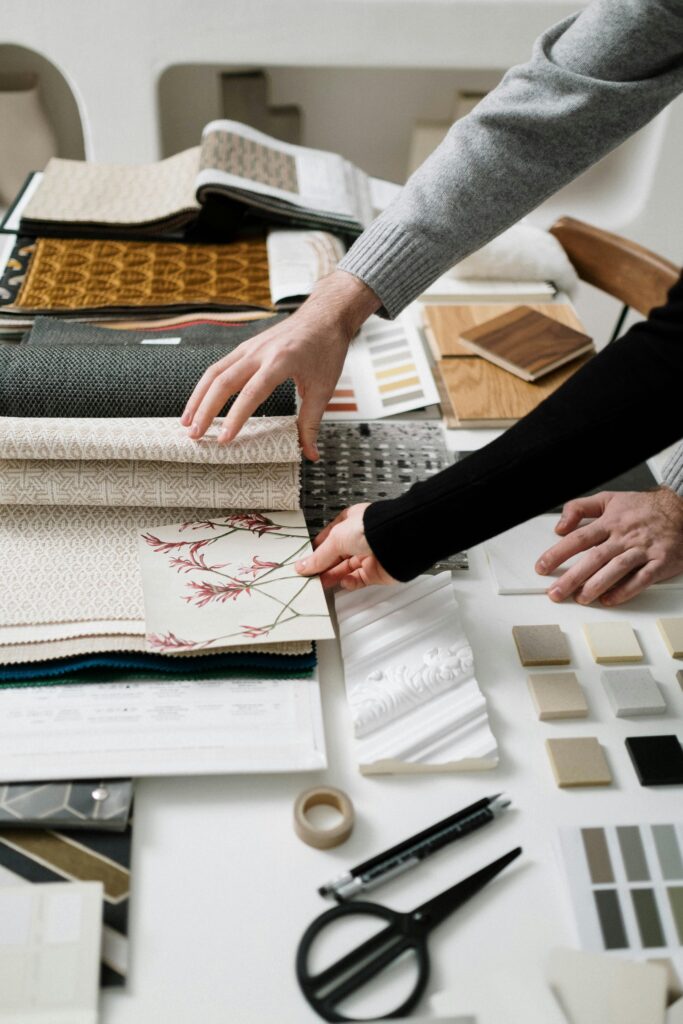The Harmony of Trade and Manufacturing
Best Materials for Children’s Clothing
Designing high-quality kids’ clothing starts with choosing the right kids fabric. Children’s garments demand fabrics that are soft, breathable and durable, yet also safe and easy to care for. The very best materials for children combine comfort and performance – for example, natural fibers like organic cotton provide gentle, breathable comfort, while technical yarns add moisture-wicking or stretch as needed. For brand designers and wholesale buyers, partnering with an experienced textile provider is key. A specialist like Atoptex can help source and customize fabrics that meet exacting standards of children’s clothing material, blending comfort, safety and sustainability from design through production.
Why Fabric Quality Matters for Kids
Children’s skin is delicate and their activities are vigorous – so fabric quality really matters. Soft, natural fibers (such as organic cotton) reduce irritation and allow air to circulate, helping regulate body temperature. In fact, experts note 100% organic cotton is often a top choice for baby and toddler wear because it is very soft, hypoallergenic and doesn’t irritate sensitive skin. Equally important is safety: kids’ fabrics should be free of toxic chemicals. Looking for certifications like OEKO-TEX® Standard 100 can ensure that every component (fibers, dyes, trims) has been tested against hundreds of harmful substances. High-quality materials also stand up to wear and washing – durable weaves and finishes keep clothes looking and fitting better over time, which is essential for active children and children’s clothing material that lasts.
Key Fabrics Used in Children’s Clothing
Natural fibers are often the foundation of kids’ clothing. Cotton is ubiquitous in baby and toddler garments because it is soft, durable and breathable. Pure cotton knits and wovens feel gentle against skin and allow heat and moisture to pass through, keeping children comfortable in warm weather. For instance, 100% cotton jersey and muslin are common in onesies, tees and pajamas for their comfort and ease of care. (Note: 100% organic cotton is even more desirable, as it avoids pesticides and harsh processing.)

Other breathable natural fabrics include linen and bamboo-based rayon. Linen (made from flax) is very durable yet highly breathable; its open weave helps keep kids cool on hot days. Lightweight linen shirts or shorts drape nicely and have a crisp, clean feel that becomes softer with each wash. For colder weather or special garments, Merino wool and even silk may be used: modern merino fabrics are surprisingly soft and provide warmth while wicking moisture. Silk has a luxurious hand and good insulation, though it is more delicate.
Synthetic and blended textiles also play a role. Polyester and nylon blends are used in sportswear and outerwear for children because they can be engineered to be moisture-wicking, stretchy and abrasion-resistant. These technical fabrics dry quickly and resist wrinkles or fading, which is useful for active kids. For example, a polyester-spandex knit can give stretch and shape retention for play clothes. Overall, the best kids’ garments often combine fibers: a cotton-polyester blend might balance softness with durability, while a cotton-spandex knit adds stretch to grow-with-fit.

What to Look for in the Best Kids’ Clothing Material
When selecting material for children’s clothing, consider the key qualities that support comfort and safety. First, softness and breathability are non-negotiable – fabrics should feel gentle against skin and allow air flow. For example, 100% natural fibers like cotton or linen are usually very breathable. Softness also ties to fit; flexible knit fabrics (like cotton jersey or modal blends) allow free movement without chafing. Second, safety and non-toxicity are critical: look for certified fabrics (OEKO-TEX® Standard 100, GOTS organic) to ensure materials have no harmful residues
- Comfort & Softness: Choose fabrics like organic cotton or bamboo viscose that are naturally soft. Soft knits and brushed finishes feel cozy on a child’s skin. Avoid stiff or scratchy fibers for everyday wear.
- Breathability & Moisture-Wicking: Opt for breathable weaves (cotton, linen, merino) or engineered knits that wick sweat away. Breathable fabrics help regulate body heat – especially important since children can’t cool off as efficiently as adults.
- Safety & Non-Toxicity: Ensure textiles meet safety standards. Certified fabrics (OEKO-TEX, GOTS) guarantee no toxic chemicals or allergens in the fibers or dyes. This protects sensitive infants and children from reactions and long-term exposure.
- Durability & Easy Care: Look for strong, tightly woven fabrics or blends that resist tearing and shrinkage. Durable fabrics extend garment life through many washes. Performance fibers (like polyester blends) add strength; be sure blends are still skin-friendly. Check that materials hold color and shape to endure heavy use.
- Sustainability: Eco-friendly materials matter to many families. Organic cotton, linen, Tencel® (lyocell) or recycled fibers reduce environmental impact. For instance, organic cotton uses far less water and no pesticides. Prioritize renewable or recycled textile fibers when possible, as long as they still meet the comfort and safety criteria.
Custom Textile Solutions from Atoptex
Atoptex’s long experience in custom fabrics makes it a strong partner for children’s clothing lines. As a direct manufacturer, Atoptex controls every step of fabric production – from fiber sourcing to dyeing – which ensures strict quality control, consistent color lots and reliable reordersa-toptex.com. This means brands get the same exact fabric batch after batch. The company’s scale is impressive: its website notes 600 clients from 100 countries and over 1,000 fabric designs that can be customized to precise needsa-toptex.com. In other words, Atoptex collaborates with hundreds of global brands and has an extensive catalog of textile prototypes and patterns.
Atoptex emphasizes integrated R&D and design, allowing it to develop high-performance textiles tailored for kids’ wear. For example, finishes can be added for flame-resistance or UV protection, and blends can be engineered for extra durability or softness. Because Atoptex manages production end-to-end, they can offer competitive pricing even for complex custom orders. They also cater to brands of all sizes – from startup designers to large retailers. In short, Atoptex’s infrastructure and expertise make it possible to create children’s fabrics that hit all the marks (softness, safety, breathability, etc.) without sacrificing creative design or scale.
Conclusion
In children’s apparel, fabric choice makes all the difference. The best kids’ clothing materials balance multiple qualities: they’re soft and breathable for comfort, durable and easy to care for, and certified free of harmful chemicals for safety. Sustainable options like organic cotton or recycled fibers add environmental benefits as well. By focusing on these factors and working with an experienced textile partner, brands can create garments that parents will trust and kids will love. Atoptex’s deep expertise in custom textiles means that whether you need innovative performance knits or classic cotton weaves, they can deliver fabric solutions designed specifically for children’s clothing. With the right materials and manufacturing partner, designers and buyers can confidently produce high-performance, safe, and sustainable kids’ clothing on a global scale.
